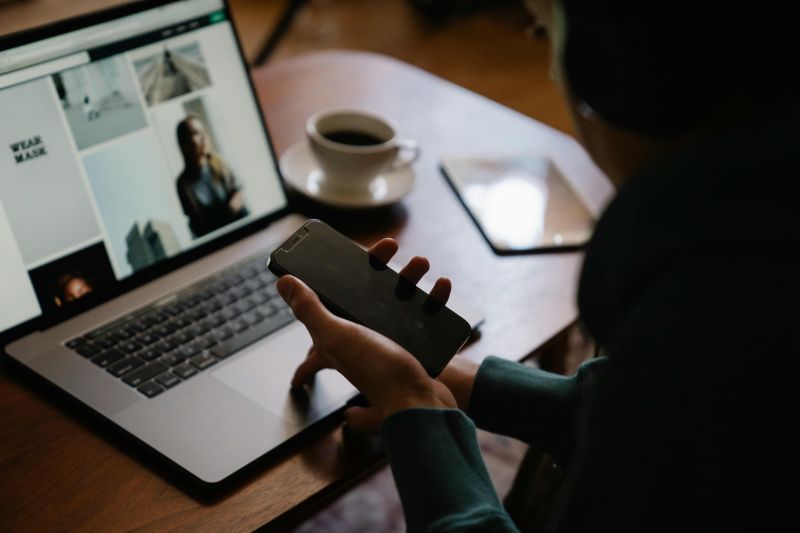Meta Description: Discover how to optimize your website for Image SEO with expert strategies, HTML tips, and best practices to boost your visual content’s visibility on search engines.
Let’s face it—images are the unsung heroes of the internet. They grab attention, tell stories, and make your content pop. But here’s the kicker: if you’re not optimizing your images for search engines, you’re leaving a ton of traffic on the table. That’s where Image SEO comes into play. Whether you’re a blogger, a small business owner, or a corporate giant, mastering Image SEO can skyrocket your visibility and drive more organic traffic to your site.
At Cyticx, we offer full service website design & SEO for professionals, small businesses, and corporations. And today, we’re diving deep into the world of Image SEO—what it is, why it matters, and how to do it right.
What is Image SEO?
Image SEO is the process of optimizing images on your website so that search engines can understand and rank them effectively. This includes everything from file names and alt text to image size and loading speed. When done right, Image SEO can improve your site’s visibility in Google Images and enhance your overall SEO performance.
Why Image SEO Matters More Than Ever
With the rise of visual search and platforms like Google Lens, optimizing your images isn’t just a nice-to-have—it’s a must. Visual content is processed 60,000 times faster than text, and users are increasingly relying on images to find what they’re looking for. If your images aren’t optimized, you’re missing out on a massive chunk of potential traffic.
Choosing the Right Image Format for SEO
Not all image formats are created equal. The format you choose can impact your site’s speed and SEO. Here’s a quick breakdown:
| Format | Best For | SEO Impact |
|---|---|---|
| JPEG | Photographs | High compression, good quality |
| PNG | Graphics with transparency | Larger file size, better quality |
| WebP | Modern web images | Best compression and quality balance |
Whenever possible, go with WebP—it’s fast, efficient, and supported by most modern browsers.
Compressing Images Without Losing Quality
Large images slow down your site, and that’s a big no-no for SEO. Use tools like TinyPNG, ImageOptim, or ShortPixel to compress your images before uploading. Aim for the smallest file size without sacrificing visual quality. Google loves fast-loading pages, and compressed images are a big part of that.
Crafting Descriptive File Names for Image SEO
Don’t upload images with names like “IMG_1234.jpg.” Instead, use descriptive, keyword-rich file names like “blue-running-shoes-men.jpg.” This helps search engines understand what the image is about and improves your chances of ranking in image search results.
Using Alt Text to Improve Accessibility and SEO
Alt text serves two purposes: it makes your site accessible to visually impaired users and helps search engines understand your images. Keep it descriptive, concise, and include your target keywords naturally. For example:
“Alt=‘Professional website design for small businesses’”
Need help writing alt text? Check out our blog for more tips.
Leveraging Image Captions for Better Engagement
Captions are often read more than the body text. They provide context and can improve user engagement. While they don’t directly impact SEO, they enhance the user experience, which indirectly boosts your rankings.
Creating an Image Sitemap for Google
An image sitemap helps Google discover all the images on your site. You can add image tags to your existing sitemap or create a separate one. Use tools like Screaming Frog or Yoast SEO to generate it. Submit it via Google Search Console for indexing.
Responsive Images for Mobile Image SEO
With over 60% of traffic coming from mobile devices, your images must be responsive. Use the <picture> and srcset attributes to serve different image sizes based on the user’s device. This ensures fast loading and a better user experience.
Lazy Loading for Faster Page Speeds
Lazy loading delays the loading of images until they’re needed. This reduces initial page load time and improves performance. Use the loading="lazy" attribute in your <img> tags or implement it via JavaScript.
Structured Data for Image SEO
Adding structured data (Schema.org) helps search engines understand your images better. Use the ImageObject schema to provide details like image URL, caption, and license. This can enhance your appearance in rich results.
Optimizing Thumbnails for SEO
Thumbnails are often overlooked, but they play a crucial role in user experience and SEO. Ensure they’re compressed, properly named, and include alt text. Also, make sure they’re clickable and lead to relevant content.
Using CDN to Serve Images Faster
A Content Delivery Network (CDN) like Cloudflare or Amazon CloudFront can serve your images from the nearest server to the user. This reduces latency and improves load times, which is great for both users and search engines.
Image SEO and Core Web Vitals
Google’s Core Web Vitals include metrics like Largest Contentful Paint (LCP), which is often an image. Optimize your images to load quickly and improve your LCP score. This directly impacts your rankings.
Using Original Images to Stand Out
Stock photos are everywhere. Using original, high-quality images can set you apart and improve your SEO. Google favors unique content, and that includes visuals. Invest in custom photography or design to boost your brand’s credibility.
Image SEO for E-commerce Websites
Product images are critical for e-commerce. Optimize them with descriptive file names, alt text, and structured data. Also, include multiple angles and zoom features to enhance user experience and reduce bounce rates.
Image SEO for Blogs and Articles
Images in blog posts should support the content and be optimized for SEO. Use relevant keywords in file names and alt text, and place images near related text. This improves context and helps search engines understand your content better.
Image SEO for Local Businesses
Local businesses can benefit from geo-tagging images and using location-based keywords. For example, “plumber-in-dallas.jpg” is better than “plumber.jpg.” Also, upload images to your Google Business Profile for better local visibility.
Monitoring Image SEO Performance
Use tools like Google Search Console and Google Analytics to track how your images are performing. Look at metrics like impressions, clicks, and CTR from image search. Adjust your strategy based on what’s working.
Image SEO and Social Media Sharing
Optimized images are more likely to be shared on social media. Use Open Graph and Twitter Card tags to control how your images appear when shared. This increases engagement and drives more traffic to your site.
Avoiding Common Image SEO Mistakes
Here are some pitfalls to avoid:
- Using vague file names
- Skipping alt text
- Uploading large, uncompressed files
- Ignoring mobile responsiveness
Fixing these can give your Image SEO a significant boost.
Image SEO Tools You Should Be Using
Here are some must-have tools:
- TinyPNG – for compression
- Yoast SEO – for WordPress optimization
- Screaming Frog – for crawling and sitemap generation
These tools can streamline your workflow and improve your results.
Integrating Image SEO into Your Workflow
Make Image SEO a part of your content creation process. Create a checklist that includes naming, compression, alt text, and structured data. This ensures consistency and saves time in the long run.
Hiring a Professional for Image SEO
If all this sounds overwhelming, consider hiring a pro. At Cyticx, we specialize in full service website design & SEO for professionals, small businesses, and corporations. We’ll handle the nitty-gritty so you can focus on what you do best.
FAQs About Image SEO
1. What is the best image format for SEO?
WebP is generally the best format due to its balance of quality and compression. JPEG is also good for photos, while PNG works well for transparent images.
2. How important is alt text for Image SEO?
Alt text is crucial. It improves accessibility and helps search engines understand your images, which can boost your rankings in image search.
3. Should I use stock photos or original images?
Original images are better for SEO. They’re unique and more engaging, which can improve user experience and search rankings.
4. How do I create an image sitemap?
You can use tools like Yoast SEO or Screaming Frog to generate an image sitemap. Submit it through Google Search Console for indexing.
5. Can images affect my site speed?
Absolutely. Large, uncompressed images can slow down your site, which negatively impacts SEO. Always compress your images before uploading.
6. How do I track the performance of my images?
Use Google Search Console to monitor impressions and clicks from image search. Google Analytics can also show how images impact user behavior.
Final Thoughts: Make Image SEO a Priority
There you have it—a comprehensive guide to mastering Image SEO. From choosing the right formats to crafting killer alt text, every detail matters. Optimizing your images isn’t just about rankings; it’s about creating a better experience for your users.
Want to take your Image SEO to the next level? Reach out to us at Cyticx. We offer full service website design & SEO for professionals, small businesses, and corporations. Let’s make your visuals work harder for your brand.
And don’t forget to check out our blog for more expert tips on SEO, web design, and digital marketing.






